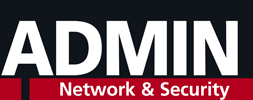
© maigi, 123rf.com
Secure remote access and web applications with two-factor authentication
Ticket Control
User authentication is all about finding out whether users really are who they claim to be. Given that unsuspecting users can fall into the trap of confusing a smartphone with an Internet hotspot, giving the hacker an easy vector for stealing their passwords, relying on usernames and passwords to access confidential information alone, is basically irresponsible. The remedy could lie in the use of additional authentication factors.
Authentication Methods
Various authentication methods can be categorized into the groups "knowledge," "possession," and "biometrics" (Table 1). These groups, also called factors, constitute the basis of any authentication method.
Table 1
Authentication Methods
| Factor | Examples | Advantages | Disadvantages |
|---|---|---|---|
| Knowledge | Password, PIN, response to security question | Low costs, easy to manage | Security depends on quality; can be guessed, sniffed, forgotten, or disclosed |
| Possession | Certificate, TAN list, chip card, one-time password token | Usually unique and therefore cannot be copied | High cost of acquisition and management; can be passed on |
Buy ADMIN Magazine
Subscribe to our ADMIN Newsletters
Subscribe to our Linux Newsletters
Find Linux and Open Source Jobs
Most Popular
Support Our Work
ADMIN content is made possible with support from readers like you. Please consider contributing when you've found an article to be beneficial.






